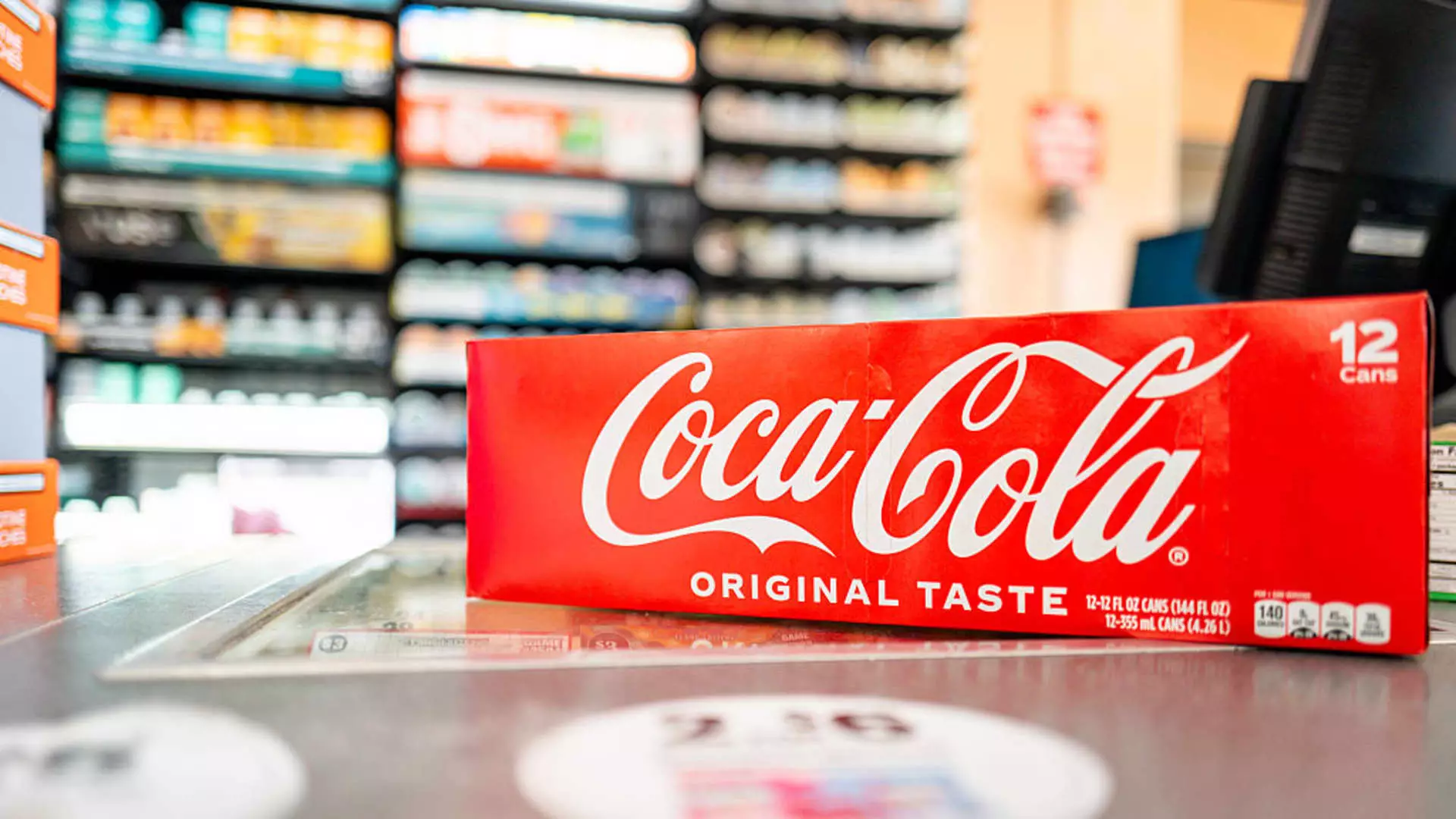Coca-Cola’s latest earnings report presents a facade of strength, yet beneath this veneer lies the undeclared reality of a struggling global brand subjected to mounting economic headwinds. The company’s ability to surpass analyst expectations on earnings per share and revenue appears promising superficially but reveals deeper vulnerabilities when scrutinized. The 1% organic revenue growth, while acceptable, falls short of robust growth, especially considering the 5% growth figure when excluding currency effects and acquisitions. This points to a company that is merely treading water rather than thriving, indicating a fragile operational backbone in a macroeconomic environment rife with uncertainty.
As global markets face inflation, geopolitical strains, and consumer confidence downturns, Coca-Cola’s performance underscores a broader truth: even the most venerable brands are not immune to the economic tremors shaking consumer spending. While North American sales showed some improvement after the first quarter slump, the 1% decline in volume signals a genuine erosion of demand. The narrative that Coca-Cola can merely “influence” its results through strategic adjustments rings hollow in a climate where consumers are increasingly cautious, and discretionary spending is tight.
Market Diversification or Strategic band-Aid? A Closer Look
The geographical divide in performance paints a picture of a company caught between hope and reality. Europe’s demonstrated resilience contrasts sharply with Latin America and Asia-Pacific regions, which experienced volume declines of 2-3%. Such disparities reveal internal vulnerabilities and the limitations of Coca-Cola’s diversification strategy. It’s critical to question whether shifting focus to specific markets truly signals a recovery or if it’s simply the company’s way of masking underlying weaknesses through selective successes.
Furthermore, the company’s segments tell a story of shifting consumer preferences and declining demand for core products like carbonated soft drinks. The flat performance of water, sports drinks, and coffee segments—despite some growth in specific niches—suggests a reorientation of consumer habits away from traditional soda consumption. This shift, intertwined with economic stress, challenges Coca-Cola’s longstanding reliance on sugary drinks, exposing its over-dependence on a declining product category.
A Brand in Transition or Losing Its Edge?
Coca-Cola’s decision to launch a cane sugar version of its flagship cola in the U.S. exemplifies its wavering position amidst changing consumer tastes and regulatory pressures. It’s a move that underscores a defensive stance rather than offensive innovation, a company reacting rather than leading. The larger implication is that Coca-Cola recognizes its core formula may no longer resonate as strongly, especially among younger, health-conscious demographics increasingly eschewing sugary sodas.
Meanwhile, external noise—from social media rumors to geopolitical tensions—continues to destabilize consumer trust and sales. The incident involving Hispanic consumers and allegations of immigration reporting reports demonstrates how fragile brand reputation can be in the digital age. Such issues fuel consumer unease and highlight that Coca-Cola’s traditional strength in brand loyalty may be evaporating faster than it can adapt.
Is the Center-Right Corporate Model Actually Sustainable in a Turbulent World?
Coca-Cola’s core strategy demonstrates the typical traits of a centrist-liberal corporate approach—cost-efficiency, cautious expansion, and a reliance on established markets. Yet, these very traits now seem inadequate to confront the realities of a fragmented global economy. The company’s narrowed profit outlook and cautious outlook for organic revenue growth reveal a deficiency in adaptive capacity—a critical flaw in an era of unpredictability.
This scenario exposes a stark truth: the traditional center-right business model that emphasizes stability, incremental growth, and risk mitigation might be ill-equipped for the demands of today’s environment. Coca-Cola’s experience serves as a warning that even industry giants must embrace agility, innovation, and resilience as core principles—traits often at odds with the cautious conservatism favored by centrist corporate strategies.
By merely fine-tuning existing operations and relying on geographic and product diversification, Coca-Cola risks complacency. The bigger challenge lies in reimagining the brand for a future where consumer values shift rapidly, where health and sustainability reign supreme, and where geopolitical instability is the norm rather than exception. The company’s current trajectory suggests a leader in decline, clinging to past strengths rather than forging a new path forward.

